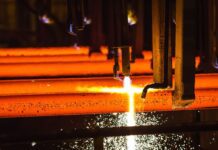
The Bionics Institute and the University of Melbourne have launched Australia’s first medical device development and manufacturing facility in Melbourne to fast-track new treatments for people with conditions such as epilepsy, Parkinson’s disease, hearing loss, stroke and diabetes.
Dubbed “Neo-Bionica”, the new purpose-built facility is a highly specialised laboratory featuring the latest cleanroom technology, cutting-edge robotic equipment, enhanced 3D printing and precision engineering tools required to develop prototypes and manufacture medical devices for clinical trials.
Bionics Institute CEO Robert Klupacs said the Neo-Bionica will provide researchers and engineers with the capability to build clinical trial grade medical devices in Australia, thus increasing the speed from initial concept to clinical application.
“Our Institute is renowned worldwide for developing life changing medical devices such as the cochlear implant, Minder™ epileptic seizure monitoring device and a unique nerve stimulation technique for the treatment of ulcerative colitis – an inflammatory bowel disease. And yet, we currently depend on companies overseas to build prototypes of the latest medical devices for use in clinical trials,” Mr Klupacs said.
“The opening of Neo-Bionica in July will completely change how we translate Australian innovation, enabling home grown inventions to be manufactured rapidly in Australia for the benefit of patients throughout the world.
“We estimate that Neo-Bionica will enable the translation from research to clinic of at least 20-30 new medical devices over the next 10 years.”
University of Melbourne Executive Director of Research, Innovation and Commercialisation Ken Jefferd said the facility will cement Melbourne’s reputation as a global biomedical powerhouse.
“Not only will patients reap the benefits of ground-breaking medical devices more quickly, Neo-Bionica will attract international collaborators, generate employment, strengthen Australia’s export capability and boost the economy,” Mr Jefferd said.
“Research impact through collaboration is a critical priority for the University and Neo-Bionica is a stellar example of our vision turning into reality.”



















